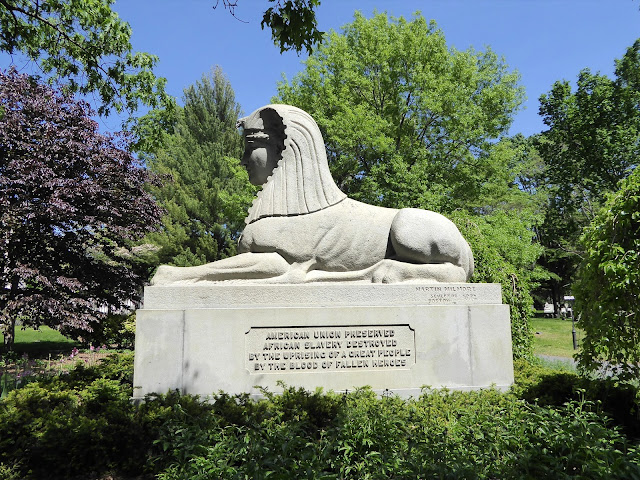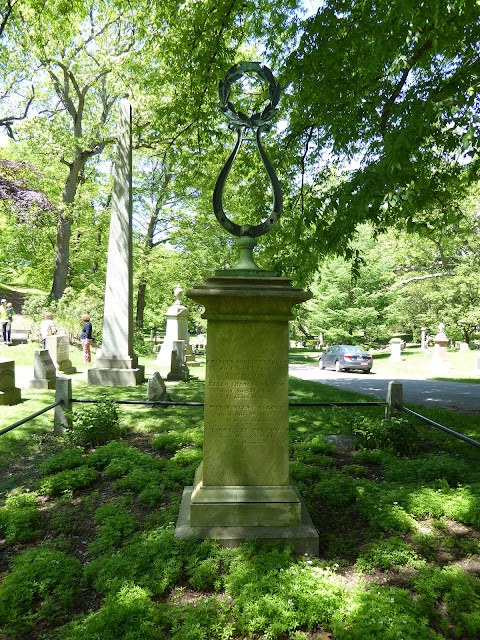Julia Ward Howe
Mt. Auburn Cemetery
Watertown, MA
N 42° 22.178 W 071° 08.828
Short Description:
The grave of poet, author, abolitionist, and women's rights activist Julia Ward Howe is located along Spruce Avenue opposite Pyrola Path in Mount Auburn Cemetery.
Long Description:
A simple stone marker facing Spruce Avenue marks the grave of Julia Ward Howe. The stone is inscribed:
JULIA WARD HOWE
Daughter of
SAMUEL WARD
Wife of
SAMUEL GRIDLEY HOWE
Born May 27, 1819
Died October 10, 1910
Julia Ward was born on May 27, 1819 in New York City. She was educated by private tutors and in schools for young ladies until she was sixteen. She married physician and social reformer Gamuel Gridley Howe in 1843. Together the couple had six children.
She wrote essays on Goethe, Schiller and Lamartine which were published in the New York Review and Theological Review. She is most famous for writing the lyrics the the Union Civil War anthem The Battle Hymn of the Republic in 1861. After the War she became an activist for pacifism and women's suffrage. She helped found the New England Women's Club and the New England Woman Suffrage Association. In 1869, she became co-leader, with Lucy Stone, of the American Woman Suffrage Association. Howe was elected president of the Association for the Advancement of Women in 1881 and founded the Century Club of San Francisco. In 1890, she helped found the General Federation of Women’s Clubs.
Julia Ward Howe was the first woman elected to the American Academy of Arts and Letters, in 1908. She was inducted posthumously into the Songwriters Hall of Fame in 1970. She was honored by the United States Postal Service with a 14 cent stamp in the Great American Series.
Selected works from Wikipedia:
Poetry:
Passion-Flowers (1854)
Words for the Hour (1857)
The Battle Hymn of the Republic (1861)
From Sunset Ridge: Poems Old and New (1898)
Later Lyrics (1866)
At Sunset, published posthumously (1910)
Other works:
The Hermaphrodite, Incomplete (1846 to 1847)
A Trip to Cuba (1860)
From the Oak to the Olive (1868)
Modern Society, essays (1881)
Margaret Fuller (Marchesa Ossoli), a biography, (1883)
Woman's Work in America (1891)
Is Polite Society Polite? , essays (1895)
Reminiscences: 1819–1899, an autobiography (1899)











































